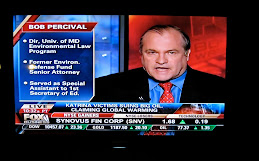On June 7 the U.S. Senate by a voice vote passed the Frank Lautenberg Chemical Safety for the 21st Century Act. The legislation, which now goes to President Obama for his signature, had passed the U.S. House by a vote of 403-12 on May 24. In 2015 both houses had passed separate versions of the legislation, which comprehensively reforms the Toxic Substances Control Act (TSCA). This is the first comprehensive updating of TSCA since it was first adopted in 1976. The legislation is the product of a bipartisan agreement initially announced in May 2013 by Democratic Senator Frank Lautenberg and Republican Senator David Vitter. The final legislation is named in tribute to Lautenberg, who died suddenly less than two weeks after reaching the agreement. New Mexico Senator Tom Udall became the chief Democratic champion of the legislation after Lautenberg’s death. The legislation requires EPA to set risk-based priorities for testing and evaluation of chemicals and it requires the chemical industry to contribute funding to support such efforts. It was supported by both the chemical industry and major environmental groups, including the Environmental Defense Fund. A few environmentalists and some state officials complained that the legislation was not stringent enough and could preempt state regulations. However, it is widely agreed that the legislation was far better than the existing law, which puts too great a burden on EPA to use cost-benefit to justify regulation and preempts state regulation of chemicals regulated by EPA.
On May 31 the U.S. Supreme Court ruled unanimously that jurisdictional determinations (JDs) by the U.S. Army Corps of Engineers that property contains wetlands subject to § 404 of the Clean Water Act are judicially reviewable. The decision was not a surprise, even though most U.S. Courts of Appeals had ruled that the issuance of a JD did not trigger judicial review. In a majority opinion written by Chief Justice Roberts, the Court held that the issuance of a JD is “final agency action” that may be challenged in court under the Administrative Procedure Act because it is definitive in nature and has direct legal consequences. The Chief Justice noted that a memorandum of understanding between the Corps and EPA makes a JD binding on both agencies for five years. An extraordinary concurring opinion by Justice Kennedy, joined by Justices Thomas and Alito, harshly criticized the “ominous reach” of the Clean Water Act (CWA) and stated that the CWA “continues to raise troubling questions regarding the Government’s power to cast doubt on the full use and enjoyment of private property throughout the Nation.”
Each summer Wolters Kluwer publishes a new edition of my book Environmental Law: Statutory and Case Supplement. I am pleased to announce that the 2016-17 supplement has now been sent to the copyeditor and will be in bookstores the first week in August. This year’s supplement includes not only the Supreme Court’s Hawkes decision, but also the Frank Lautenberg Chemical Safety for the 21st Century Act.
During Indian Prime Minister Nerendra Modi’s visit to the U.S. this week, President Obama pushed hard to encourage the Indian leader to accelerate the development of renewable energy to slow the rise of greenhouse gas emissions in India. Both leaders affirmed their commitment to the Paris Accord and pledged to reach agreement on measures to phase out HFCs, a potent greenhouse gas using the Montreal Protocol on Substances that Deplete the Ozone Layer. The two leaders set a one-year deadline for concluding a deal for the U.S. to sell six, new commercial nuclear reactors to India. A major obstacle to the deal is an Indian law that would hold the vendors of such reactors liable for damages in the event of a nuclear accident.
Public protests continue in Vietnam over massive fish kills from pollution believed to come from a new Taiwanese steel plant. The fishing industry along a 120-mile swath of coastline has been devastated and many people have become ill from eating contaminated fish during the last two months. The protests continue despite government efforts to suppress them, including hundreds of arrests and beatings of demonstrators. Last April a representative of the steel company outraged fisherman by stating, “You have to decide whether to catch fish and shrimp or to build a modern steel industry. Even if you are the prime minister, you cannot choose both.”.”Richard C. Paddock, Toxic Fish in VIetnam Idle a Local Industry and Challenge the State, N.Y. Times, June 8, 2016.
Next week I will be in China to speak at two conferences in Beijing. On Tuesday June 14 I will be at Tsinghua University where Professor Zhao Huiyu of Shanghai Jiatong University’s KoGuan Schoo of Law and I will make a presentation comparing environmental federalism in China and the U.S. This conference is sponsored by the University of Chicago/Tsinghua China Center. On Thursday June 16 I will be speaking to Chinese judges at the National Judge’s College for a program organized by the Supreme People’s Court and the UK-based NGO ClientEarth. I will be speaking on the role of the U.S. Supreme Court in shaping the development of modern environmental law.

















